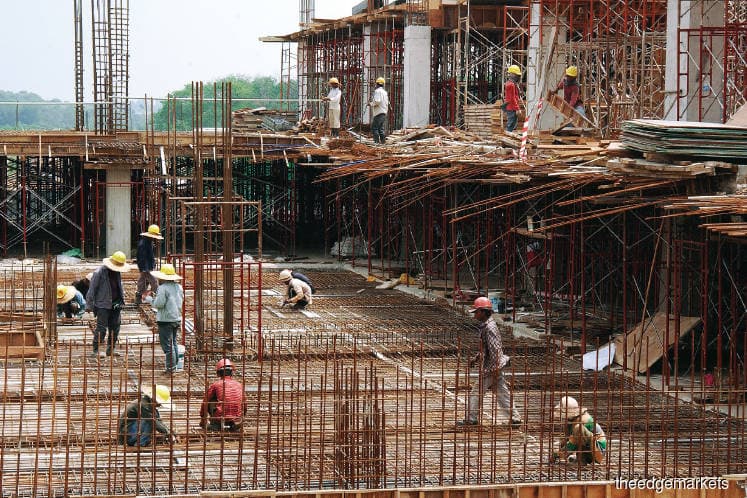
This article first appeared in City & Country, The Edge Malaysia Weekly on June 8, 2020 - June 14, 2020
Are workmanship and the quality of buildings within an architect’s control? This issue has been a persistent source of dispute among property stakeholders. The conversation on building defects continued in the second edition of the PAM Online Series ,“The state of quality of works on completed projects”, on May 14.
The speakers were Architect Centre Sdn Bhd director Anthony Lee Tee and Chur Associates founder and managing partner Chris Tan, who discussed how defects could be mitigated by means of design, contract provision, good industry practices and regulatory compliance.
“It is often perceived that good-quality workmanship of completed buildings can be controlled mainly by the design of professionals. This is the general public perception of the role of the principal submitting person (PSP),” said Lee.
The session reiterated the role of the PSP (under the Street, Drainage and Building [SDB] Act; Architects Act; and Law on Tort), whose obligations include the following: 1) The building complies with laws to ensure designs are according to life and health standards; the health and safety of occupants and society at large are protected, as evidenced by the building plans; 2) the materials used will not harm the safety and health of users and occupants, as evidenced and declared in approved building plans; 3) construction follows good practices by all parties involved to ensure the quality required to achieve No 1, as evidenced by the signed F forms; and 4) having complied with all three items above and assuming a reasonable standard of professionalism, the building is technically and legally fit for its purpose insofar as complying with the minimum standards of UBBL (Uniform Building [Amendment] By-Laws) and hence the objective of the SDB Act.
Lee explained how architects approached compliance and certifications in dealing with workmanship. “[In] the architect’s certified declaration to the UBBL, Clause 53 touches on building materials,” he said.
“It states that any material used in the erection of a building, structural alteration or extension, in the execution of the works, installation of fittings and backfilling shall be of a suitable nature and quality in relation to the purposes for and conditions in which they were used: adequately mixed and prepared, applied, used and fixed so as to adequately perform the functions for which they were designed.”
Lee said the common defects and irregularities included cracks to masonry walls, water seepage, electrical deficiencies, unregulated use of glass, illegal extensions and unregulated alterations.
“In terms of materials that are similar to waterproofing, painting, wall plastering, bricks, door frames and so on, the mismatch comes in when the developer promises [something different from] what the architect is supposed to deliver.
“There are a lot promises and branding by developers, including the Qlassic (Quality Assessment System in Construction) and all the awards [they have garnered]. As a result, purchasers have higher expectations [of a project]. This goes back to the issue of expectation management,” said Lee, proceeding to show examples of sales and purchase agreements.
“Words like ‘quality locksets’ and ‘ironmongery’ are often used. When the word ‘quality’ is used, what exactly is its benchmark? If you go into common areas in, for example, strata developments, you start seeing words that describe things in a qualitative manner such as ‘specially designed security system’, but what does it entail? Is it ‘specially designed’ to be cheap or vice versa?”
Chur Associates’ Tan concurred. “There are factors that may affect expectation management. We must look at the price, the seller, the employer (developer/contractor) versus the buyer.
“In line with price determination, branding is crucial in expectation management; it acts as a softener for all disputes. Other factors include materials and finishing, workmanship, functionality (fixtures and fittings), product warranty and non-standard contract.
“For the DLP (defects liability period), the 5% defects detected should be considered and, in terms of the nature of the defects, the difference between patent (visible defects) and latent (not so visible and may require experts’ input).”
Tan listed the essential factors in expectation management: the nature of the developments, whether residential or non-residential; furnished versus non-furnished; main parcel versus accessory parcel versus common property; single use versus mixed use versus integrated development. “They have different safety requirements,” he said.
“In terms of the differences in DLP, warranties and service life, there is confusion that may lead to disputes for building materials such as waterproofing, protective coatings, and machinery and equipment.
Tan shared a sample of a building schedule and plan. “It is stated that a building shall be constructed in a good and workmanlike manner in accordance with the description set out in the schedule and plans approved by the appropriate authority,” he said. “If you look at the grand scheme of things, it should be the authorities that issue the certificate of compliance and completion. But prior to that, it should be the architect that issues the certificate of compliance and completion for the purpose of delivery [based on the standards].”
“‘Defective’ is often described as something that is not according to design, wrong method in construction, poor materials that are used and bad labour practice. This whole issue is a balancing act among the differences in safety, standards and liability.”
Save by subscribing to us for your print and/or digital copy.
P/S: The Edge is also available on Apple's AppStore and Androids' Google Play.

